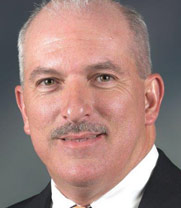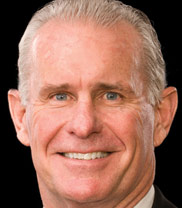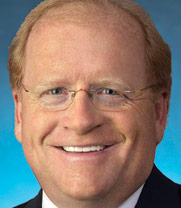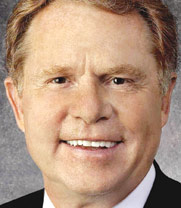Many retailer-owned wholesale cooperatives are doing well, according to industry sources — at least in part because of their willingness to cooperate with each other.
In an effort to become more competitive with big-box stores, several co-ops have begun working together to combine their buying power on Center Store merchandise when working with major CPG companies, Randy Arceneaux, president and chief executive officer of Affiliated Foods, Amarillo, Texas, told SN, “and we will continue to see that evolve.
“Since we started taking this approach, we haven’t let much grass grow under our feet.”

When co-op executives meet with vendors, “we let them know we can bring a lot of power to market together, and it’s working — the vendors are willing to put special products and packaging together for our individual companies,” he explained.
“Working through ROFDA — the Retail-Owned Food Distributors & Associates — executives from some of the retailer-owned co-ops began meeting with the CPGs last spring and then followed those initial meetings with additional face-to-face sessions last fall at the National Grocers Association conference in Chicago, where top-to-top trading partner meetings were arranged between retailers and suppliers.
Besides meeting individually with some vendors, ROFDA members also met as a group with some of the largest suppliers, Arceneaux said, “and the CPG companies have been very responsive.”
Ray Sprinkle, president and CEO of URM Stores, Spokane, Wash., said the ROFDA buying initiative has made more vendors aware of the potential power of retailer-owned co-ops. “We’ve been very successful in getting more attention from the major CPG companies,” he told SN.
“That effort has enabled us to purchase larger quantities to get a better cost of goods, and that has made our members more competitive.”

Still, the effort is not without challenges, he added. “It’s a slow process because it’s somewhat foreign for the CPGs to treat retailer-owned cooperatives as a single buyer. For some vendors, there’s a lack of understanding because it’s a different way for them to look at us.
“But we believe the process will continue.”
For Affiliated Foods, the decision to buy better through cooperation with other co-ops resulted from an effort by Arceneaux to convince his members to switch from high-low pricing to a hybrid EDLP approach “to reduce the price gap with Wal-Mart,” he explained.
“As a result, rather than being $1.50 higher on breakfast cereals, for example, the difference now is only about 35 cents.
“The consumer sees that and decides it’s not worth driving past the local market to the big-box store or major chain just to save 35 cents.
“Our members still put most of their emphasis on meat and produce, since that’s what differentiates them from the big boxes. But we’ve now gone to EDLP on Center Store categories and HBC.
“In the past some co-ops have been scared of EDLP,” Arceneaux pointed out, “because it cuts into your top-line sales and your penny profits. But the key to a hybrid approach is making sure you advertise to let consumers know what you’re offering and to teach them to shop with you.”
2013 Top 75: Affiliated Foods
The switch to a hybrid EDLP program has resulted in an uptick in AG’s sales, Arceneaux said.
Sales were up in 2010 and 2011 when the company added more than 50 Super S stores in south Texas and small groups of independents in Oklahoma to its membership, he said. However, they flattened out in 2012 “because of the economy and competition,” he noted.
“When Wal-Mart saw its same-store sales declining, it went back to its old merchandising methods, and that affected our members’ businesses, on top of which Wal-Mart began opening Neighborhood Markets in south Texas, El Paso and Albuquerque.
“But with the hybrid EDLP effort, we’re beginning to see a turnaround, with an increase in our annual sales that’s approaching 5%,” Arceneaux said.

Short-Term Promotions
Jay Campbell, president and CEO of Associated Grocers, Baton Rouge, La., said his company is accelerating the number of short-term promotions it conducts to keep its members competitive.
While some of AG’s business comes from what Campbell called “silk stocking” locations, “the bulk of the business involves consumers on government subsidies like SNAP and WIC or people on Social Security,” he pointed out, “so we must be sensitive to the realities of pricing at shelf level and be competitive on an everyday basis, and we need offerings that attract that group of consumers as well.
“When the economy started getting difficult in 2008 and 2009, our clear challenge was to help our retailers promote, so we began developing more short-term programs to drive business at retail.

“We’ve always been focused on ensuring we have the lowest cost of goods so our retailers can have shelf prices that show good values every day. But as the economy weakened, we had to find new ways to cut our operating costs as best we could to ensure our members could sell at the right price.
“In nine of the past 10 years we’ve seen same-store purchase growth from the membership, including some quite dramatic increases. That tells us those members are increasing their volume with us and increasing market shares in their operating areas, which is a good barometer to see what concentration and growth we’re getting from each member and how their businesses are growing.”
Some of the increases are coming from store expansions and upgrades, as well as from new locations, and also from picking up a few new members, Campbell said.
Read more: Wakefern, AWG Top Co-Op List
According to Campbell, AG-Baton Rouge has been instrumental in making sure its members can offer the same kinds of variety and “theater” as operators like Whole Foods, “because those are the kinds of things consumers talk about.
“So we’ve helped them develop larger fresh departments with more prepared foods and more value-added items, and we’ve also added do-it-yourself products like fresh-squeezed juices, fresh nut butters and fresh rice cakes that people can’t find anywhere else.”
Sales Growth
Affiliated Foods Midwest, Norfolk, Neb., had a record-breaking year, with sales up nearly 10% to $1.5 billion and cash patronage rebates totaling $55.5 million — up an average of 4.75%, with some rebates as high as 5.19%, without any margin increases for several years, the company indicated.
Operating expenses also fell because of ongoing warehouse efficiencies, it said.
URM also had a solid year, with sales breaking the $1 billion mark for the first time in the fiscal year ended in August. With an extra week in the year, sales were up 5%, which translated to an increase of 3.5% without the benefit of that week, Sprinkle noted.
He said he attributed the gains to growth among members, including new stores and upgrades, and to the acquisition of seven existing stores from Unified Grocers, Los Angeles, and Supervalu, Minneapolis.
2013 Top 75: Affiliated Foods Midwest
Sprinkle has headed URM since February, succeeding Dean Sonnenberg, who retired after heading the co-op for nine years.
URM is building a 75,000-square-foot addition to its 680,000-square-foot perishables facility in Tacoma, Wash., with the new frozen foods area scheduled to be operational by the end of the year and the refrigerated warehouse operational by May 1, Sprinkle said.
“Perishables is the fastest-growing segment of our business, and we feel it will continue to grow,” he explained.
URM is also analyzing its information technology needs at the distribution and member levels, he added.
New Initiatives at Unified
Unified Grocers is also beginning to provide members with more analytics.
For example, to serve its members’ large Hispanic consumer base, Unified has announced plans to initiate two programs in 2014 — a series of turnkey storefront events encompassing 16 promotions, plus a digital platform to complement the events that will provide quantifiable data and critical metrics around the number of cases moved at retail.
The company said it expects the programs to generate sales and establish customer loyalty for members and suppliers.
Unified has also launched a new sales task force, which seeks ways to handle products better and more efficiently and to help members boost sales, including making better use of scan data to drive sales by providing analytics so members can identify selling opportunities.

Sales at Unified have continued to erode slowly, declining 1.9% to $3.8 billion for the fiscal year ended in September, compared with $3.85 billion the previous year and $3.9 billion in 2011.
According to Bob Ling, president and CEO, the membership is solid but the sales performance “reflects the current economy, with some members experiencing ups and others experiencing downs. But everyone is trying to improve what they have.
“The economic environment remains difficult in many areas, and all retailers up and down the West Coast are facing margin pressure and the pressure to present a strong value proposition. But the competitive situation seems to be improving slowly.”
Ling, who had held the title of president for about a year, added the title of CEO last May when Al Plamann retired from Unified.
Unified used the transition to reassess its operations, and in the process it instituted the sales task force, as well as new customer satisfaction teams to improve communications with members.
The teams cross traditional organization lines “to make sure we are an easier company for the members to work with and to ensure that all aspects of the customer experience are at the highest levels,” Ling said.
2013 Top 75: Unified Grocers
The teams consist of groups of people within each distribution center who drill down to what members want and then communicate with them on issues aimed at improving sales — for example, making sure the company is in-stock, that orders are being delivered on time and that there are resolutions to any issues that arise.
Unified is also encouraging members to get more involved with social media to communicate better with consumers, Ling said.
The nation’s largest retailer-owned cooperative — Wakefern Food Corp., Keasbey, N.J. — achieved record sales of $14.1 billion for the fiscal year ended Sept. 28 — an increase of 3.9%.
Karen Meletta, vice president of consumer and corporate communications, told SN the company’s ShopRite stores are having to make some adjustments to meet the demands of the rising Millennial generation, “which is very interested in where products came from and in buying from local businesses,” she explained.
2013 Top 75: Wakefern Food Corp.
“So our members sell a lot of local produce in their stores, and we make sure we promote that in ads, on billboards and on in-store displays,” she said.
According to Joseph Colalillo, president and CEO, Wakefern must continue to evolve as consumer needs change.
“It is no longer enough for our stores to have the same logo to deliver a unified shopping experience,” he told the company’s annual meeting. “We will and must unite in a shared purpose and commitment to build upon past successes and achieve the next level of excellence.”
With the addition to its membership during the year of The Fresh Grocer, an eight-store operator in Philadelphia that offers quality perishables in urban locations, Wakefern took ownership of that banner, which could give it the option to open more upscale stores to complement its conventional ShopRite banner and its lower-priced PriceRite stores, observers told SN.
Future Upbeat
The future is upbeat for retailer-owned grocery cooperatives, Al Plamann, now chairman of the National Cooperative Bank, told SN, though challenges from alternate formats and the Internet loom large.
According to the NCB, the 10 largest grocery cooperatives saw combined sales rise by 3.4% between 2011 and 2012, compared with an increase of 5.6% between 2010 and 2011.
“Retailer-owned co-ops with members in large urban areas have increasing opportunities to market to ethnic groups better than the chains can, plus the ability to adjust formats as demographics change,” Plamann pointed out.

“In less urban areas, where the independent may be the only store in town or where there’s minimal competition, he has opportunities to develop a healthy market share by offering variety and excitement in the stores.
“It’s tougher for independents in smaller markets when Wal-Mart or other big boxes enter because they force some independents out of business, and those areas are difficult for co-ops to find success in.”
However, as consumers opt for more convenience, the larger-footprint stores are finding it more difficult to pick up business, Plamann pointed out. “And with Wal-Mart planning more Neighborhood Markets in some areas, it will be more like competing with a conventional chain for some independents, and they are well equipped to do that.”
However, alternative formats pose an additional threat, he said, “and the Internet share is growing like crazy.
“To compete, independents will have to aggregate their power through the use of social media and technology solutions and piggyback on that with the ability to analyze a bigger chunk of their businesses,” Plamann explained.
“Retail-owned co-ops will have to provide their members with more analytic information and help them apply that data to make the members stronger.”
Collecting data to provide analytics may not always be easy, at least initially, Plamann said, because despite the bonds that develop among co-op members, when those members compete with each other, they are more likely to try to protect their individual data, whereas members who don’t compete have less reticence to do so.
Read more: Wakefern Sales Top $14 Billion
“But once co-ops are able to explain the benefits to the members, they are generally all very supportive in submitting their data for analysis and guidance,” Plamann said.
There is also some resistance among co-op members to use social media, Plamann said. “But the co-ops must find a way to convince their retail members that there’s a benefit to becoming involved with social media and to make the required investment because that’s what they will have to do over the next five years to keep pace with the competition.”
Plamann said he anticipates consolidation over the next three to five years among retailer-owned co-ops, particularly among those west of the Mississippi River.
“There are long transportation situations in the West, which has contributed to more partnering or combining of resources among co-ops,” he said.
“But rather than trying to stretch warehouse distribution into another company’s territory, it may be easier to consolidate, and there are significant consolidation opportunities in the West.
“There could also be some consolidation in the East, but the co-ops there are more likely to find ways to do more things together, such as buying meat or produce or some specialty lines together.”
One of the biggest positives about co-ops, Plamann said, is that they operate with complete transparency. “The customers are the owners, so there’s a significant degree of transparency around which business is done.
Read more: Self-Negotiating Co-Op for AWG Tops 500 Members
“When I joined Unified, I was initially skeptical about whether the members would really be loyal, but they are. The bond among them is real, and it makes for a significant point of differentiation.”
Several co-op executives said they agree that the model works well.
According to Sprinkle of URM Stores, the co-op model works “because the members own the company and that keeps them focused on their needs.”
Campbell of AG-Baton Rouge said the model is effective “because it enables us to be more nimble and to react quicker to the needs of our owners.
“In addition, the No. 1 priority is to keep the retail-owned company in business and successful, while the wholesale part comes second, whereas other types of wholesalers are more interested in pure profits for the owners.”
However, times are changing, Campbell acknowledged, noting that his company has lost some members “because the old days of automatic loyalty have greatly diminished.”
The National Cooperative Bank provides loans and support to a wide variety of cooperative businesses across the U.S. — including agriculture, health care, hardware, finance, energy and pharmaceuticals — with grocery cooperatives accounting for less than 10% of NCB’s business, Plamann indicated.
Barry Silver, executive vice president of the NCB, said grocery co-ops are a powerful factor in the industry, “because with an increase in the number of mega stores and the decline in the number of private wholesalers, the independent grocers don’t have many places to go to remain competitive on pricing or advertising.
“Having a good supplier gives independents the ability to be viable and provide good customer service.
“Those companies are often two- or three-store operators, and they’re able to operate in the marketplace through the support of a cooperative that allows them to market according to the demographics of the market they serve.”
According to Silver, there are more than 26,000 cooperatives in the U.S. — a number that’s been decreasing as more companies have merged over the last few years, “which means the remaining ones are better and stronger.”
Over the last 25 years, grocery cooperatives have gotten better, Silver said, with a better quality of staff and a better mindset that enables members to be competitive with everyone, including Wal-Mart.
“And co-ops encourage their members and the families that own the businesses to renovate stores by guaranteeing bank loans and provide them with the knowledge of how to pass the stores on to the next generation.
“Without the encouragement to grow and the knowledge about succession, many retailers would simply disappear once an owner decides to leave the business.”
| Suggested Categories | More from Supermarketnews |
 |
|

|
|


